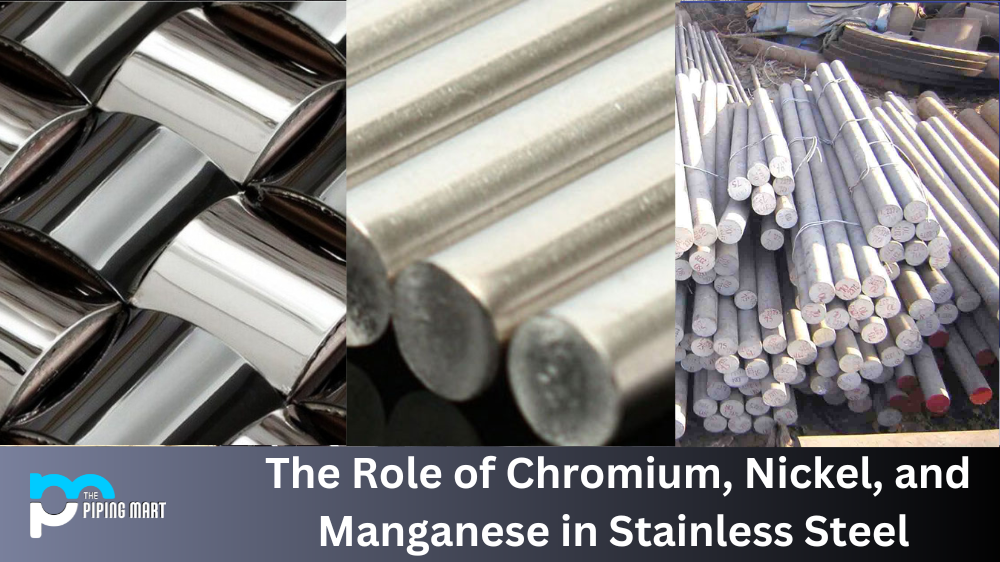Have you ever wondered what makes stainless steel so durable and corrosion-resistant? The answer lies in the materials used to make it. Chromium, nickel, and manganese are the three most important elements used in producing stainless steel. Understanding how each element contributes to the production process can help us appreciate just how useful this alloy really is.
Chromium
Chromium is arguably the most important element used in stainless steel production. It is chromium that gives stainless steel its remarkable strength and corrosion resistance. Without it, most types of stainless steel would not exist because they would be too weak and vulnerable to oxidation. That’s why it’s common for chromium content to range from 10-30% when making stainless steel; more chromium means greater durability.
Nickel
Nickel plays an equally important role in the production of stainless steel. Nickel helps stabilize the structure of the metal by keeping its grains small, which enhances its tensile strength and ductility. In addition, nickel helps maintain a uniform surface finish on the metal—something that is essential for industrial applications where appearance matters (e.g., food processing equipment). Most grades of stainless steel contain between 8-10% nickel to ensure optimal performance.
Manganese
Manganese is another key component of stainless steel because it helps prevent corrosion by forming an oxide film on the surface of the metal that prevents further oxidation from occurring. This oxide film also helps enhance the wear resistance of parts made from stainless steel by providing additional protection against abrasion and scratching. Typically, manganese content ranges between 1-2%.
Conclusion
As you can see, chromium, nickel, and manganese are essential elements for producing high-quality stainless steel products that are strong, durable, and corrosion-resistant. Without them, this versatile alloy wouldn’t have half as many uses as it does today! By understanding their individual roles in creating this amazing material, we can better appreciate its usefulness in our daily lives!

Pipingmart is B2B portal specializes in industrial, metal and piping products. Also, share latest information and news related to products, materials and different types grades to help business dealing in this industry.




